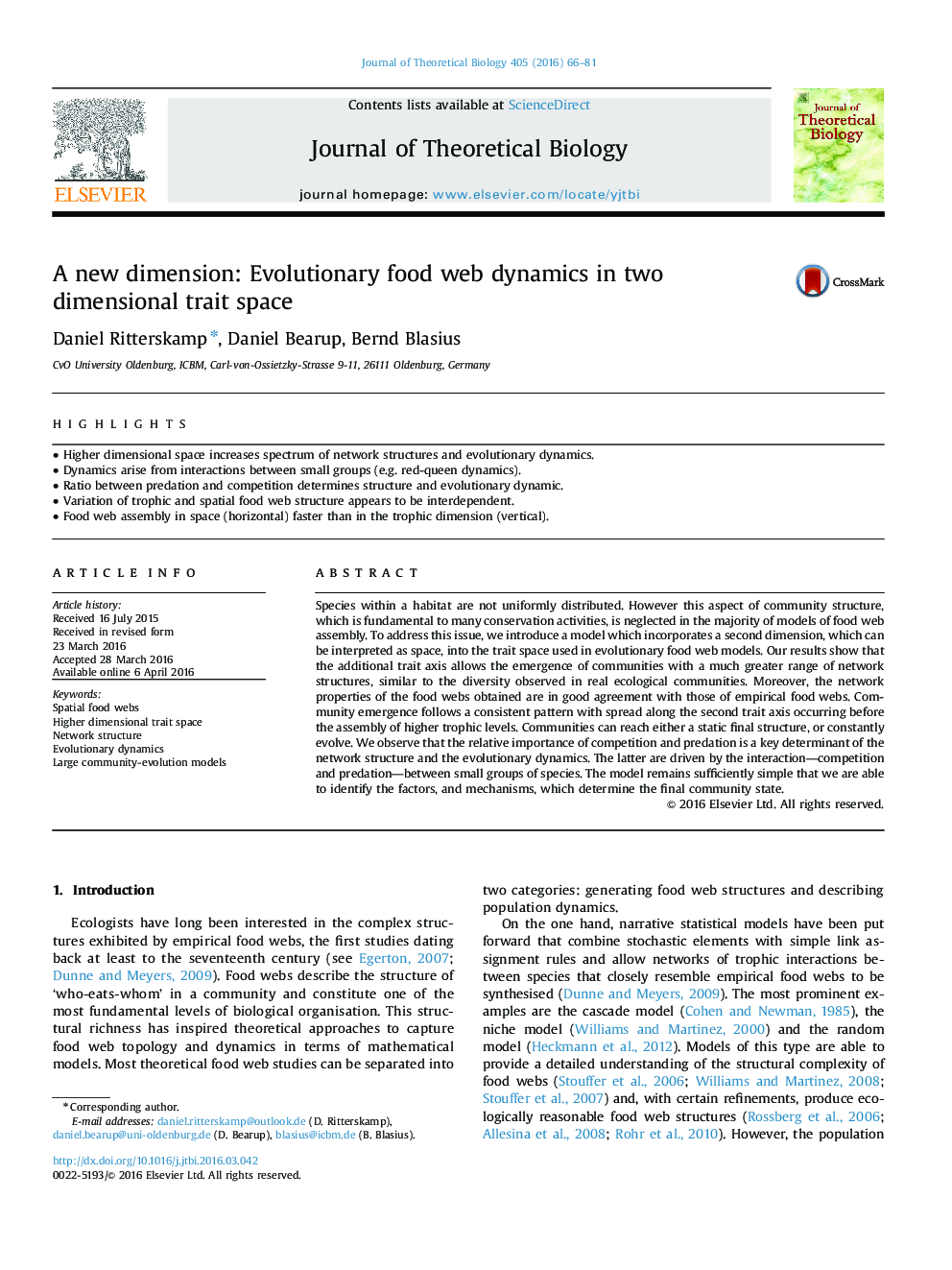| Article ID | Journal | Published Year | Pages | File Type |
|---|---|---|---|---|
| 6369118 | Journal of Theoretical Biology | 2016 | 16 Pages |
â¢Higher dimensional space increases spectrum of network structures and evolutionary dynamics.â¢Dynamics arise from interactions between small groups (e.g. red-queen dynamics).â¢Ratio between predation and competition determines structure and evolutionary dynamic.â¢Variation of trophic and spatial food web structure appears to be interdependent.â¢Food web assembly in space (horizontal) faster than in the trophic dimension (vertical).
Species within a habitat are not uniformly distributed. However this aspect of community structure, which is fundamental to many conservation activities, is neglected in the majority of models of food web assembly. To address this issue, we introduce a model which incorporates a second dimension, which can be interpreted as space, into the trait space used in evolutionary food web models. Our results show that the additional trait axis allows the emergence of communities with a much greater range of network structures, similar to the diversity observed in real ecological communities. Moreover, the network properties of the food webs obtained are in good agreement with those of empirical food webs. Community emergence follows a consistent pattern with spread along the second trait axis occurring before the assembly of higher trophic levels. Communities can reach either a static final structure, or constantly evolve. We observe that the relative importance of competition and predation is a key determinant of the network structure and the evolutionary dynamics. The latter are driven by the interaction-competition and predation-between small groups of species. The model remains sufficiently simple that we are able to identify the factors, and mechanisms, which determine the final community state.
